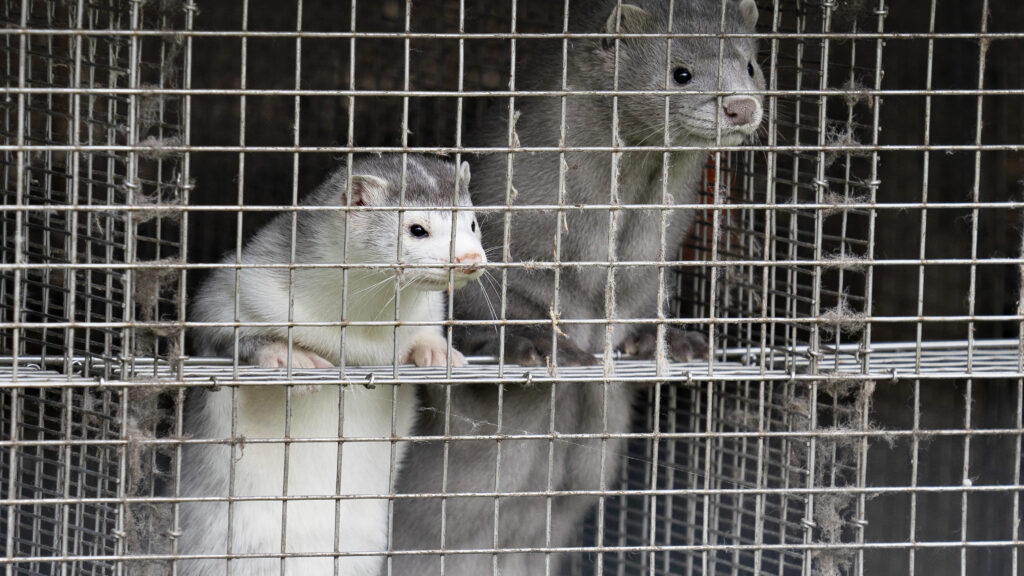Denmark set off alarm bells this week with its announcement that it is culling the nation’s entire mink herd — the largest in the world — to stop spread of the SARS-CoV-2 virus in the prized fur species because of potentially dangerous mutations.
Inter-species jumps of viruses make scientists nervous — as do suggestions of potentially significant mutations that result from those jumps. In this case, Danish authorities say they’ve found some genetic changes that might undermine the effectiveness of Covid-19 vaccines currently in development.
But is this latest twist in the Covid-19 saga reason to be deeply concerned? Several experts STAT consulted suggested the answer to that question is probably not.
advertisement
“This hits all the scary buttons,” noted Carl Bergstrom, an evolutionary biologist at the University of Washington. But Bergstrom and others argued that while the virus’s penchant for infecting mink bears watching, it isn’t likely to lead to a nightmare strain that is more effective at infecting people than the current human virus.
“I don’t believe that a strain which gets adapted to mink poses a higher risk to humans,” said Francois Balloux, director of University College London’s Genetics Institute.
advertisement
“We can never rule out anything, but in principle it shouldn’t. It should definitely not increase transmission. I don’t see any good reason why it should make the virus more severe,” he said.
Let’s take a look at what’s known about the Danish situation, why inter-species jumps make scientists nervous, whether the mutations are likely to affect vaccine effectiveness, and why Balloux thinks this situation is “fantastically interesting.”
What’s happening in the state of Denmark?
Denmark is the world’s largest producer of mink; it produces about 28% of the supply of this luxury fur.
Unfortunately, mink are susceptible to the SARS-2 virus, a fact that came to light in April when the Netherlands reported outbreaks on mink farms there. Infected humans who work in the farms transmit the virus to captive minks, which are housed in close quarters ideal for rapid transmission from mink to mink.
Occasionally, the mink infect people — a phenomenon recorded in both the Netherlands and in Denmark. In a statement, the Danish Ministry of Environment and Food said the country would cull its entire herd — estimated to be about 17 million animals — after finding mutations in the viruses from the mink that it believes would allow those viruses to evade the immune protection generated by Covid-19 vaccines.
Why do they think the mutated viruses would evade the vaccines?
Experts outside the country are not clear what that claim is based on. While there has been some information released about the mutations that have been recorded, it isn’t yet enough to support such a bold claim, said Marion Koopmans, head of virology at Erasmus Medical Center in Rotterdam, the Netherlands, where a lot of the analyses from viruses from the Dutch mink outbreaks have been conducted.
“That is a very big statement,” said Koopmans. “A single mutation, I would not expect to have that dramatic an effect.”
Outside experts haven’t had genetic sequencing data to peruse, said Emma Hodcroft, a molecular epidemiologist at the Institute of Social and Preventative Medicine in Bern, Switzerland. But Denmark uploaded 500 genetic sequences into databases open to scientists around the globe on Thursday, and is expected to add hundreds more in the days to come.
Experts will pore over those sequences looking for what the Danes saw and to try to determine what impact these mutations may have if viruses containing them infect people.
For now, however, Hodcroft agrees with Koopmans. “It’s almost never the case that it’s such a simple story of one mutation and all your vaccines stop working.”
She, frankly, is more concerned with how the announcement was handled than about the findings themselves. “It puts scientists and the public in a really difficult position when we have statements like this out there for which we have very little information or context,” Hodcroft said. “These things are essentially never black and white.”
What’s the big deal of species jumps anyway?
Species jumps always make scientists nervous. One such event, after all, is how we ended up with the Covid-19 pandemic.
Viruses that typically infect one kind of animal — let’s use bats as an example — that find their way into another species can trigger severe illness in the new species if the virus is able to transmit efficiently. Viruses can become entrenched — endemic — in the new species.
It’s thought, for instance, that the four coronaviruses — cousins of SARS-2 — that cause common colds spilled over from other species into humans at some point in the past. Flu virus spillover events — from poultry or from pigs — occur from time to time. The 2009 H1N1 pandemic was triggered when a flu virus that had been circulating in pigs started infecting people.
After years of coping with viral spillovers like Ebola outbreaks, flu pandemics plus the earlier coronavirus jumps like the 2003 SARS outbreak, people are primed to be worried about these events, Bergstrom said.
But this is a different situation, he said. It’s not a virus unknown to humans that has jumped from an animal species. In this case, a virus that has already adapted to spreading among people jumped to minks and is now occasionally jumping back.
Bergstrom thinks it’s prudent of the Danish government to cull the mink herd. But he’s not sure the changes that have occurred in the mink are likely to make the virus worse for people.
“We’re used to being scared before a pandemic when something from a distant species comes into a nearer species. And our intuitions aren’t quite right for what happens in the middle of a pandemic when something goes from us into a distant species and then comes back,” he said.
Balloux and others suggested the changes seen in the mink viruses may be a sign of the virus adapting to infect minks — which might make the viruses less effective in people over time.
Capturing a spillover in real time
Balloux pegs the risk the spillover poses to humans as being “really, really small.”
But he said it is exceptional to actually be able to capture in real time what happens when a spillover happens, and chart the genetic changes from the start.
Typically when such events occur, humans only recognize what’s going on when a virus has adapted to spread in people. For example, the early changes that made SARS-2 capable of transmitting from a still unknown animal species to people were never observed.
“It’s completely exceptional,” Balloux said. “We are always [too] late.”
















